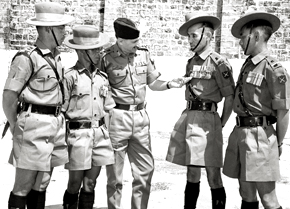INDIAN ARMED FORCES CHIEFS ON OUR RELENTLESS AND FOCUSED PUBLISHING EFFORTS

SP Guide Publications puts forth a well compiled articulation of issues, pursuits and accomplishments of the Indian Army, over the years

"Over the past 60 years, the growth of SP Guide Publications has mirrored the rising stature of Indian Navy. Its well-researched and informative magazines on Defence and Aerospace sector have served to shape an educated opinion of our military personnel, policy makers and the public alike. I wish SP's Publication team continued success, fair winds and following seas in all future endeavour!"

Since, its inception in 1964, SP Guide Publications has consistently demonstrated commitment to high-quality journalism in the aerospace and defence sectors, earning a well-deserved reputation as Asia's largest media house in this domain. I wish SP Guide Publications continued success in its pursuit of excellence.
Requiem For A Field Marshal

In the passing away of Field Marshal S.H.F.J. Manekshaw, MC, the nation has lost not just a courageous soldier and a leader of great distinction, but a bold and upright son of India
Old soldiers never die, it used to be said, they just fade away. When a sovereign or head of state ceremonially presents a Field Marshal’s baton to a soldier, he is conferring the highest honour a nation can bestow on one of its valorous warriors. Ironically, since Field Marshals are created for life, they never retire. They do, however, die.
In the passing away of Field Marshal Sam Hormusji Framji Jamshedji Manekshaw, MC, the nation has lost not just a courageous soldier and a leader of great distinction, but a bold and upright son of India. The Gurkhali nom de guerre Sam Bahadur bestowed on him was a token of the tremendous respect and affection in which he was held by his comrades-in-arms, as well as of his personal courage for which he received a battlefield Military Cross during the Burma campaign.
When Indian forces liberated Bangladesh, taking 93,000 Pakistani combatants prisoner, it was indubitably one of the most comprehensive victories in India’s long history. The architect, undoubtedly, was Sam Manekshaw, who had the graciousness and strength of character to assign credit for this feat of arms to his Commanders-in-Chief and other subordinates. But of equal significance, in many ways, was Manekshaw’s conduct during a period of grave national crisis from April to December 1971, and the tact and firmness with which he guided the political leadership.





